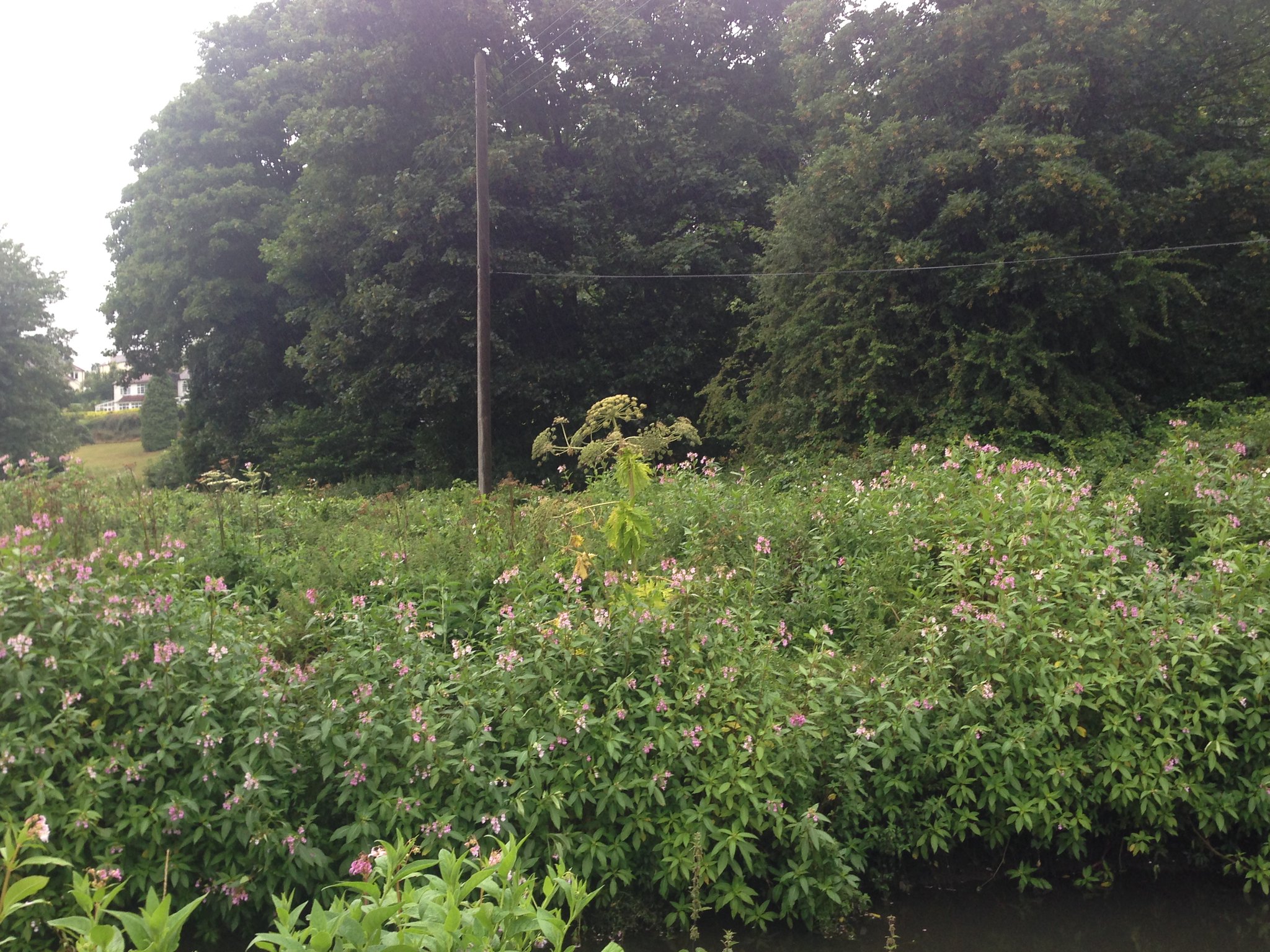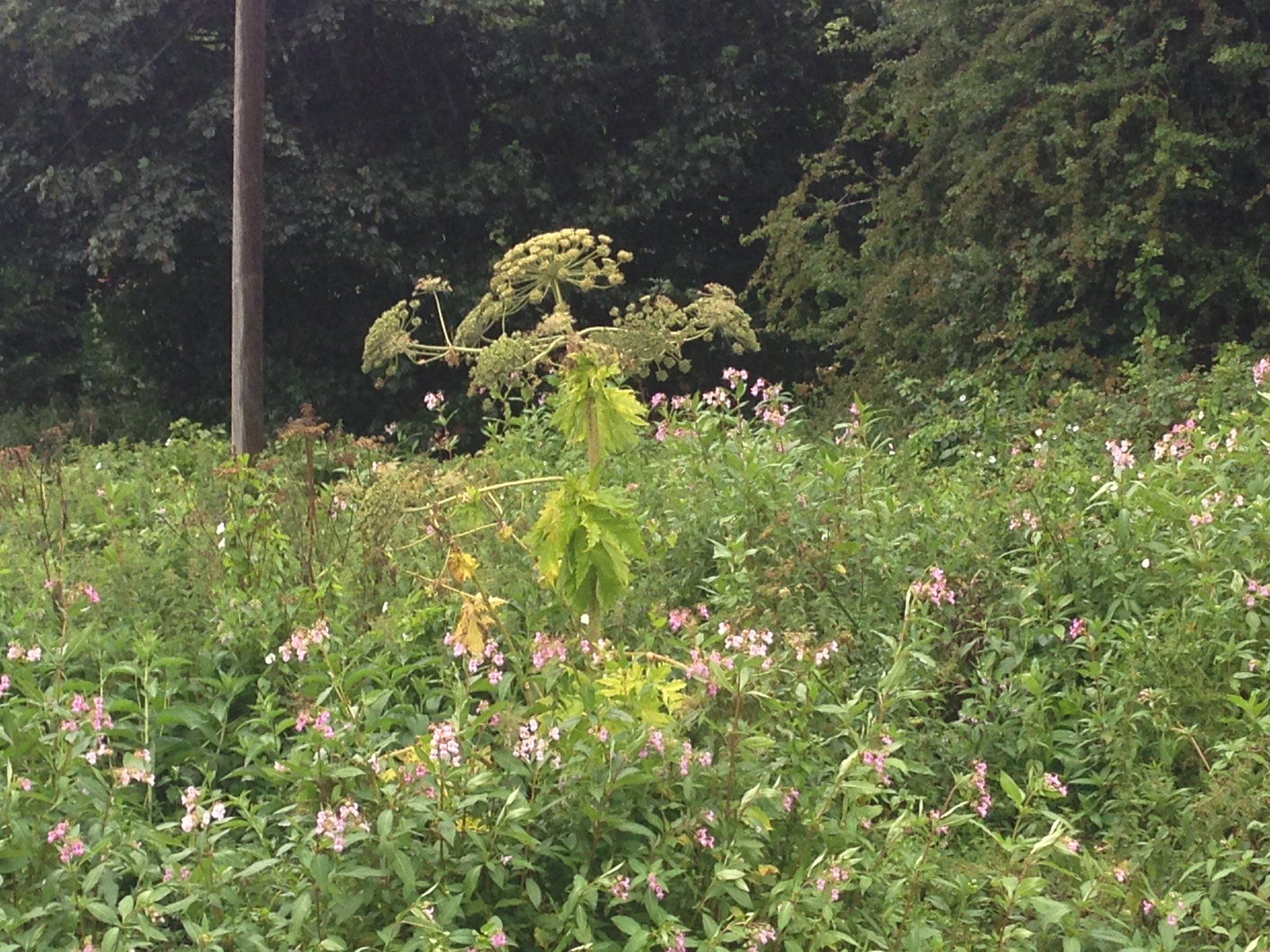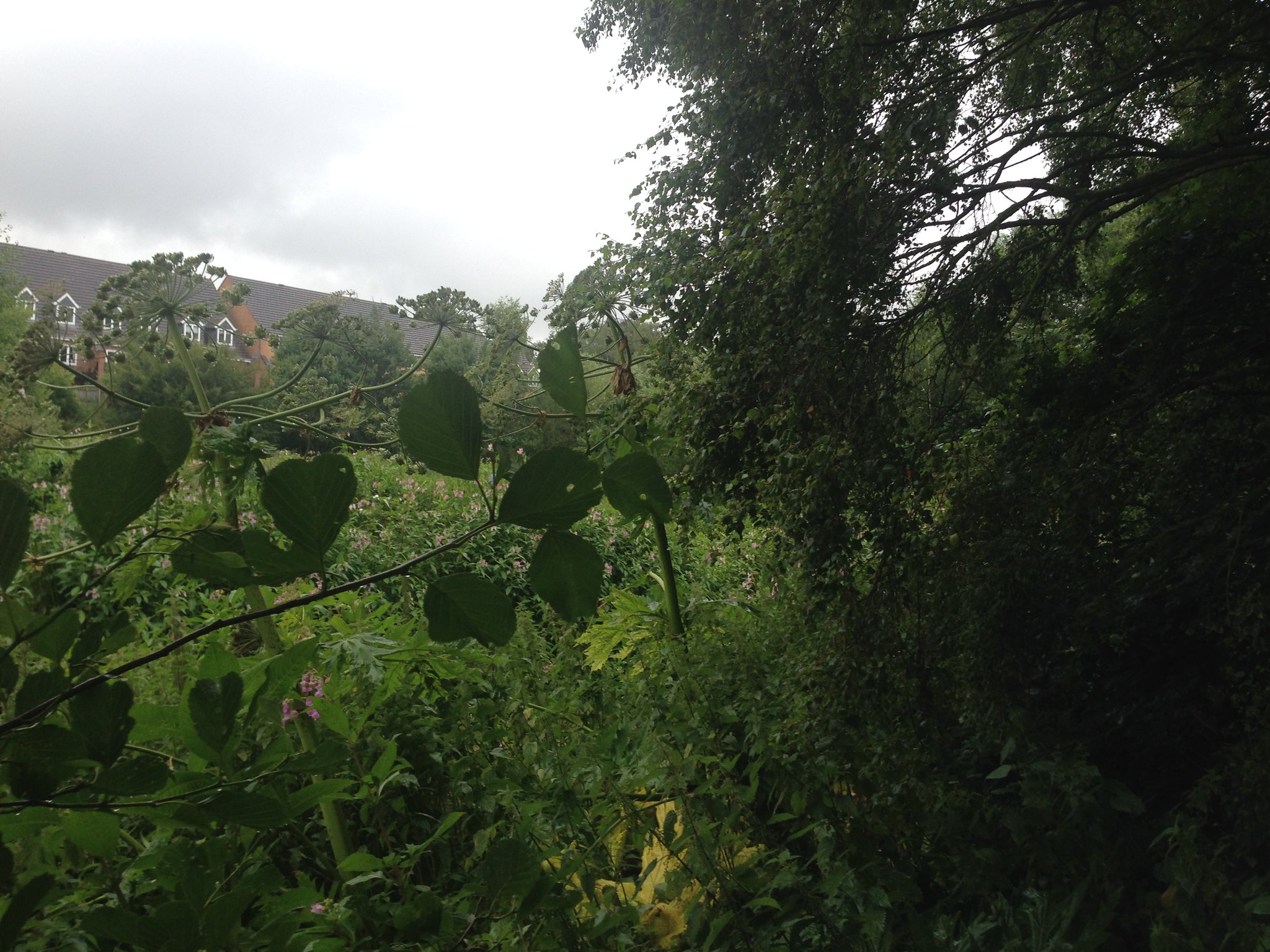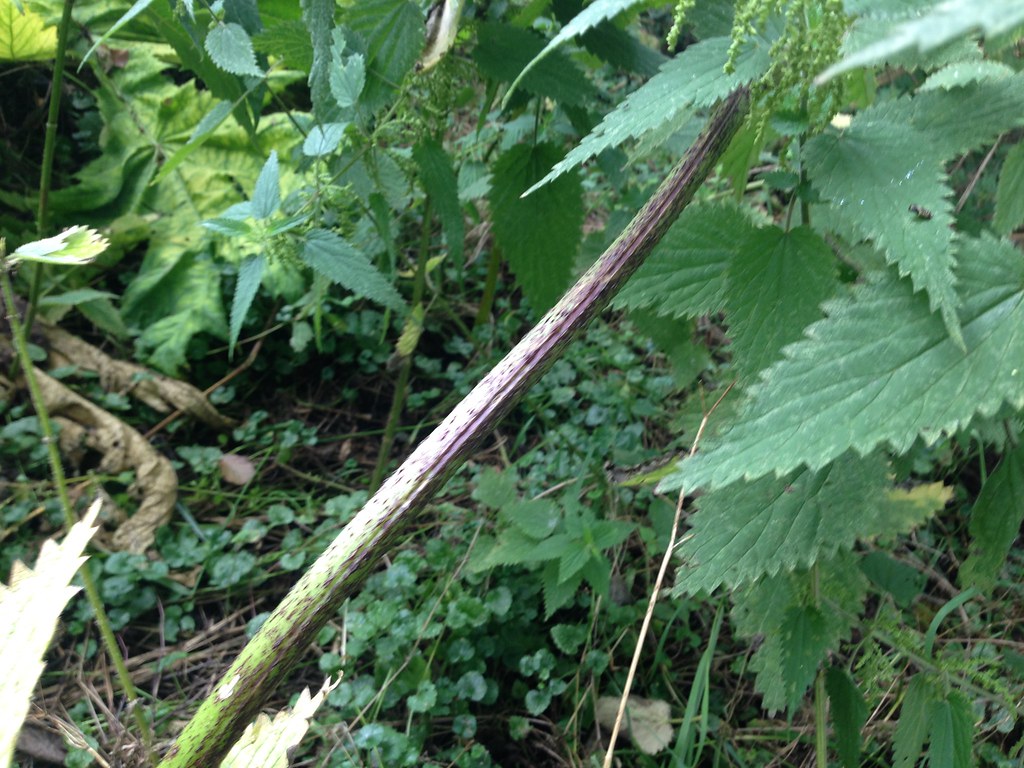- This topic has 25 replies, 20 voices, and was last updated 8 years ago by wrightyson.
-
Giant hogweed
-
z1ppyFull MemberPosted 8 years ago
Just had a plant pointed out to me (came home and confirmed it is) on a local river bank, on the opposite bank of the park we walk the dog. The land it’s on is part of a flood plain between the river and canal, not accessed by anyone… who do we report it to?
Three_FishFree MemberPosted 8 years agoYour Council’s Environmental Health department, I’d imagine. At least they’d point you in the right direction.
FlaperonFull MemberPosted 8 years agoWhy not just get a pair of latex gloves and pull it out yourself?
slowoldmanFull MemberPosted 8 years agoSend for Genesis
[video]https://www.youtube.com/watch?v=f59EKHdeyKc[/video]wanmankylungFree MemberPosted 8 years agoWhy not just get a pair of latex gloves and pull it out yourself?
Because that would be stupid and make the problem worse.
zippykonaFull MemberPosted 8 years agoThis is useful.
[video]http://m.youtube.com/watch?v=sysmrqw4sEo[/video]MidnighthourFree MemberPosted 8 years agoGood of you to care, but probably wasting your time. The councils etc have no resources left due to Central government cutbacks – they cant even keep the Libraries open in many places.
Our local council verges are covered in this plant which it is illegal to allow to grow
The need to control ragwort
Common Ragwort (Senecio jacobaea) is a specified weed under the Weeds Act 1959. It contains toxins, which can have debilitating or fatal consequences if eaten by horses and other grazing animals.
Ragwort may need to be controlled when its presence and the likelihood of it spreading to neighbouring land poses a risk to horses and other grazing animals or land used for the production of forage.
The Code of Practice provides practical advice on identifying the risk and the most appropriate means of control.
The safe and effective disposal of ragwort is an important part of ragwort control. Disposing of ragwort responsibly reduces the risk of further spread by seed dispersal and regrowth from root sections.
DracFull MemberPosted 8 years agoReport it. Our local Council has been running a promotion of reporting it this year.
big_n_daftFree MemberPosted 8 years agoalso report to EA/ SEPA
it is an issue for the landowner to sort out, the sooner they tackle it the less the cost
cruzcampoFree MemberPosted 8 years agoHeres a pic from env agency about to move a giant hogweed, tis quite sizeable 😆
CountZeroFull MemberPosted 8 years agoSpotted this yesterday, and I wondered if it might have been hogweed, but it didn’t have the purple splotches. It is around seven or eight feet tall, and the leaves are very similar, as are the flower heads. Apparently there are four different types of hogweed, including a native version which is smaller than the better known giant hogweed, and is similarly photo-toxic, just not quite as bad.
[/url]Untitled by Adrian Hillier, on Flickr
KucoFull MemberPosted 8 years agoEA won’t do bugger all about at most probably send someone to look at it if your lucky.
z1ppyFull MemberPosted 8 years agoOriginal one..
[url=https://flic.kr/p/weUCan]Giant Hogweed?[/url] by Paul, on Flickr
[url=https://flic.kr/p/weMcpW]Giant Hogweed?[/url] by Paul, on Flickr
Found two more of the bloody things!
[url=https://flic.kr/p/vznpof]Giant Hogweed?[/url] by Paul, on Flickr
Have to say it can’t have been there that long (the other two are a bit more hidden), otherwise I’d have seen it before!
timberFull MemberPosted 8 years agoGood quantity of Himalayan Balsam too.
EA/NRW may well have a river catchment spray scheme to prevent downstream spread. Wye and Usk in Wales do/did.wrightysonFree MemberPosted 8 years agoThis stuff has been all over Facebook of late warning people of it’s deadlynessnesses! Similar to last year when the false widow spider was killing everyone.
As kids where we lived we had them a good 6/8ft tall and used to take great pleasure in slicing them zorro style with a nicely hewn piece of branch from a tree. He who got splashed with the juice did not die!M6TTFFree MemberPosted 8 years agoRegular native knotweed tends to grow in singular, whereas giant hogweed will more often be found in clumps. It’s a lot more invasive, and tends to take over the environment it’s found in. It was introduced as an ornamental plant, before horticulturalists realised what a pita it is, along with our other favourite, Japanese Knotweed
FlaperonFull MemberPosted 8 years agoWhy not just get a pair of latex gloves and pull it out yourself?
Because that would be stupid and make the problem worse.
Why would it be stupid?
Why would it make the problem worse?
8/10 for general knobbishness on your reply, but only 2/10 for useful info. Show your working etc.
(Assuming this isn’t one of the 20ft mega-giant-hogweeds that make the papers?).
rickonFree MemberPosted 8 years agoAs kids where we lived we had them a good 6/8ft tall and used to take great pleasure in slicing them zorro style with a nicely hewn piece of branch from a tree. He who got splashed with the juice did not die!
Probably Cow Parsely then, Giant Hogweed is a lot bigger than 6/8ft at full growth, and it’s sap is toxic.
Zippy, I can’t see a purple blotchy stem in your photos – is it just a green furry stem? Same to CountZero – the Giant Hogweed plant has purple blotches on it’s stem and is quite distinctive once you know what your confusion species are.
munrobikerFree MemberPosted 8 years agoIf it’s on a river bank you could try the Canals and Rivers Trust.
https://canalrivertrust.org.uk/our-work/vegetation-management/invasive-species-control
Your local EHO (council Environmental Health Officer) is also a fairly good bet.
M6TTFFree MemberPosted 8 years agoas said above – if you had got the sap from giant hogweed on you, you would know about it. It is nasty stuff. And yes, you would be making the problem worse if you pulled it out of the ground. It thrives on disturbance, and a mature plant can disperse thousands of seeds, which will rapidly thrive. Chemical treatment is the most effective way to control it
bigjimFull MemberPosted 8 years agoJust knock it over before it goes to seed, the stem snaps at the base with a bit of a push. What you really don’t want to do is leave it until all that himalayan balsam goes to seed too, then walk through it making it fire its seeds into the river and then knock the hogweed seeds into the river too, that would be a total fail. If you do that then be sure to wipe the hogweed juice all over yourself and sit in the sun for a bit as punishment.
z1ppyFull MemberPosted 8 years agoChemical treatment is the most effective way to control it
I saw a clump being dealt with on the local highway, agent orange come to mind, they killed it and everything around it!
TBH I just tried to get close to it, to get the colour of the stem, and found I was almost into the clump – lot of low stuff growing I had’t noticed in the rain yesterday. Being as I’m in shorts and in danger of breaking the stems of the lower stuff, I backed away quickly… Wrightyson, this is not cow parsley that we all played with as children.. Environmental agency/Natural England think it worth noting Environmental management – guidance Harmful weeds and invasive, non-native plants: prevent them spreading
As for the stem colour greeney/yellow with definite purple to it..
[url=https://flic.kr/p/wvEEXL]Giant Hogweed?[/url] by Paul, on Flickr
Local council have mailed to say they passed my report onto the “grounds maintenance team”
The topic ‘Giant hogweed’ is closed to new replies.

 [/url]
[/url]


